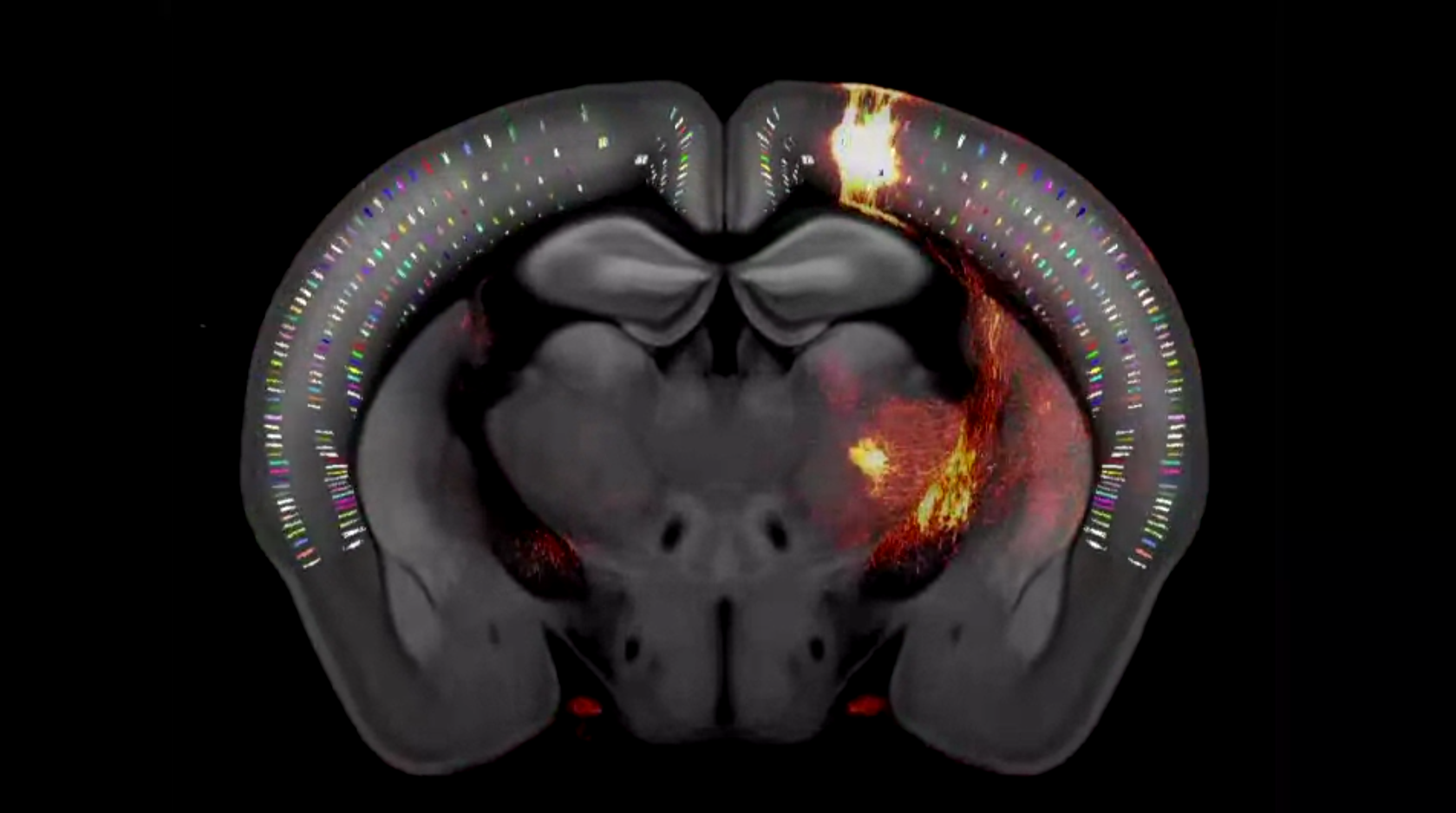Gigantic new 3D map traces every neuron in a tiny mouse brain
There's a whole world in a little mouse's head.

No, you're not looking at a psychedelic Millennium Falcon: This flickering, ghostly image is the most detailed view of a mouse brain ever seen.
Researchers at the Allen Institute for Brain Science, a Seattle nonprofit dedicated to neuroscience, have been painstakingly recording every brain cell and every connection between those neurons in mice for the past several years. The result represents major progress since an earlier, simpler map they released in 2016. The now-complete map encompasses about 100 million cells, the institute reported in a paper published today (May 7) in the journal Cell.
The project aims to do for neuroscience what whole-genome sequencing did for biology in the 1990s: create a common, standardized mouse brain that all researchers working on mice can reference.
Related: 2016 Images reveal a first effort to map the mouse brain
"In the old days, people would define different regions of the brain by eye. As we get more and more data, that manual curation doesn't scale anymore," Lydia Ng, an Allen Institute researcher and senior author of the Cell paper, said in the statement.
Typically, researchers trace connections between brain cells using thin slices of tissue that can be imaged and explored layer by layer. To build a comprehensive, three-dimensional map, the Allen Institute team instead broke the mouse brain into "voxels" — 3D pixels — and then mapped the cells and connections within each voxel.
The result comprises an "average" of the brains of 1,675 laboratory mice, to make sure the map was as standard as possible.
Sign up for the Live Science daily newsletter now
Get the world’s most fascinating discoveries delivered straight to your inbox.
Mice are common "model organisms" in neuroscience. Their brains have fairly similar structures to humans', they can be trained, they breed easily, and researchers have already developed robust understandings of how their brains work.
The hope is that the map will bring that understanding to a new level, the Allen Institute said. In doing so, neuroscientists will have a tool with which to develop new research programs and accelerate research already underway. The institute compared its achievement to 1990s-era efforts to sequence different organisms' DNA for the first time, projects that transformed the way biologists work
- Images: Fossilized dinosaur brain
- 10 Facts Every Parent Should Know About Their Teen's Brain
- 3D Images: Exploring the Human Brain
Originally published on Live Science.
OFFER: Save 45% on 'How It Works' 'All About Space' and 'All About History'!
For a limited time, you can take out a digital subscription to any of our best-selling science magazines for just $2.38 per month, or 45% off the standard price for the first three months.












